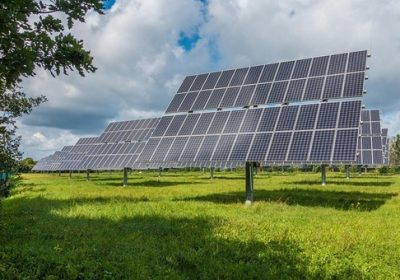The Pros and Cons of Different Types of Pipe Materials In Your Home Plumbing
When building or renovating your home, have you ever paused to consider the pipes hidden behind the walls and beneath the floors? Choosing the right pipe material for your plumbing system is crucial, not only for ensuring a durable setup but also for maintaining the functionality and efficiency of your water delivery and waste disposal. This choice impacts everything from the longevity and cost of your plumbing to the quality of water that flows through your taps. Let’s dive into the details of different pipe materials and how selecting the right one can significantly affect your home’s plumbing infrastructure.
1. Using Polyvinyl Chloride (PVC) Pipes in Your plumbing
Pros
- Corrosion Resistance: PVC pipes will not degrade over time, making them a robust option for sewer lines and water mains.
- Lightweight and Easy Installation: These pipes are lighter than metal, reducing transportation costs and making them easier to handle during installation.
- Cost-Effectiveness: Generally less expensive than metal pipes, PVC offers a budget-friendly option without compromising quality.
Cons
- Temperature Sensitivity: PVC pipes are not suitable for hot water lines as they cannot withstand high temperatures.
- Pressure Sensitivity: Under high pressure, PVC can crack or break, which might lead to significant maintenance issues.
2. Using Copper Pipes In Your Plumbing
Pros
- Durability and Reliability: Known for their longevity, copper pipes can last over 50 years and are resistant to corrosion if properly maintained.
- Antimicrobial Properties: Copper’s biostatic atmosphere prevents bacteria from growing, ensuring water purity.
- Versatility: Suitable for both hot and cold water, making them a comprehensive solution for residential plumbing.
Cons
- Cost: Copper is generally more expensive than plastic pipes, which might be a deterrent for some budgets.
- Installation: Installing copper piping requires soldering, which demands skill and can be labor-intensive.
3. Using Cross-Linked Polyethylene (PEX) Pipes In Your Plumbing
Pros
- Flexibility: PEX pipes are highly flexible, which minimizes the need for fittings and reduces the chances of leaks.
- Corrosion and Scale Resistance: These pipes do not corrode or develop scale, ensuring clean water flow and reducing maintenance.
- Cost and Installation Efficiency: Cheaper and quicker to install compared to copper, PEX requires fewer connections and fittings.
Cons
- UV Sensitivity: PEX cannot be used outdoors as UV rays can degrade the material.
- Longevity Uncertainty: Being relatively new, the long-term effects and durability of PEX are not as well documented as more traditional materials.
4. Using Galvanized Steel Pipes In Your Plumbing
Pros
- Strength and Durability: Extremely strong and able to withstand high pressures and temperatures.
- Suitability for Outdoor Use: Effective for both indoor and outdoor plumbing systems due to their robustness.
Cons
- Corrosion Issues: Over time, galvanized pipes can corrode internally, which may lead to reduced water quality and flow.
- Weight and Installation Difficulty: Their heavy weight makes installation more challenging and labor-intensive.
5. Using Cast Iron Pipes In Your Plumbing
Pros
- High Durability: Cast iron is incredibly durable, perfect for underground installations such as main sewer pipes.
- Sound Dampening: Excellent at reducing the sound of running water; ideal for apartment buildings and multi-story homes.
Cons
- Weight: The heavy weight of cast iron makes handling and installation difficult.
- Corrosion Risk: Over time, cast iron may rust, which can cause clogs and require replacement or maintenance.
6. Using Chlorinated Polyvinyl Chloride (CPVC) Pipes In Your Plumbing
Pros
- High-Temperature Tolerance: CPVC can handle higher temperatures than standard PVC, making it suitable for hot water distributions.
- Fire Resistance and Easy Installation: These pipes are easy to install and have good fire-resistant properties.
Cons
- Brittleness: More brittle than PVC, CPVC can crack under certain conditions, leading to leaks.
- Cost: Typically more expensive than PVC, which might not fit all budgets.
Selecting the right pipe material is not just a matter of preference but a decision that affects the efficiency, cost, and safety of your home’s plumbing system. While each material has its pros and cons, understanding your specific needs and consulting with a professional can help you make the best choice.
Tips for Choosing the Right Plumbing Pipe Material:
- Consider Water Quality and Usage: Select materials like copper for better water quality due to its antimicrobial properties.
- Evaluate the Installation Environment: Use PEX for areas requiring flexibility and PVC or CPVC where affordability is key.
Maintenance Tips for Different Plumbing Pipe Materials:
- Regularly Inspect Metal Pipes for Corrosion: Especially important for galvanized steel and copper piping.
- Monitor for UV Damage in Exposed Areas: Particularly for materials like PEX that are sensitive to sunlight.
FAQs
Q: Which pipe material is best for residential plumbing? A: The best material depends on your specific needs. PEX is great for easy installation and corrosion resistance, while copper is preferred for longevity and antimicrobial properties.
Q: Are PEX pipes environmentally friendly? A: Yes, PEX pipes are lead-free and often chosen for green building projects due to their energy efficiency in terms of heat retention and minimal wastage.
Article suggested by Refined Plumber Sunshine Coast
More Plumbing Reading:
- Understanding Your Home’s Plumbing System: An Essential Guide for Homeowners
- Top 10 Common Plumbing Problems in Homes and How to Fix Them
- Eco-Friendly Plumbing Solutions: Saving Water and Money
- The Pros and Cons of Different Types of Pipe Materials In Your Home Plumbing
- How to Prevent and Deal with Frozen Pipes During Winter
- DIY Plumbing: What You Can Fix and When You Need a Professional
- Modern Innovations in Plumbing Technology for Homes









